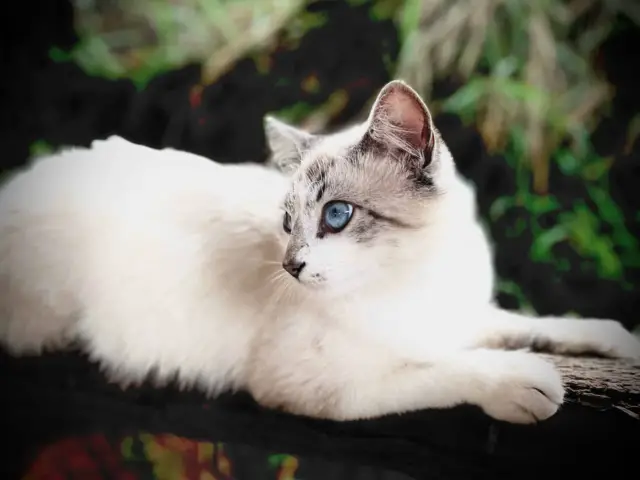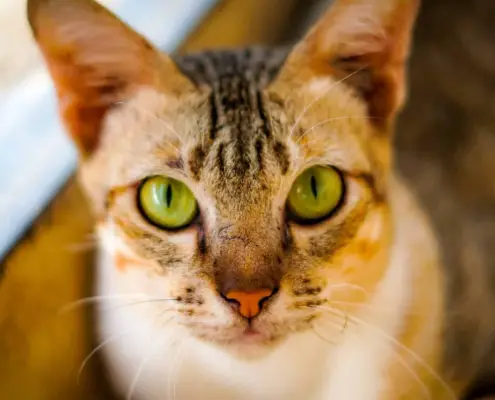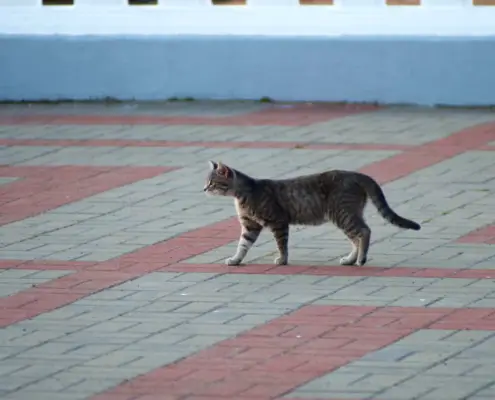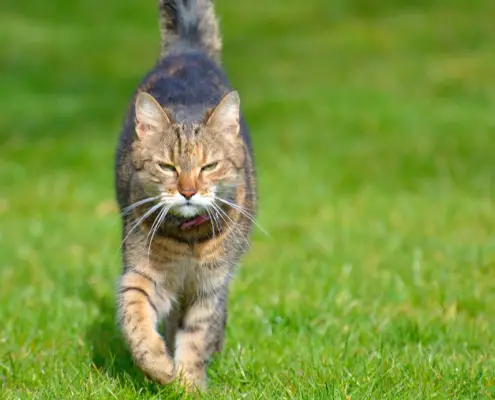
Cats have long been associated with mystery, independence, and agility. But when it comes to bravery, do they measure up? In this article, we will explore the fascinating world of feline courage and uncover the truth about whether cats are truly brave. Join us as we delve into examples of bravery in cats, the scientific explanation behind their fearlessness, compare their bravery with dogs, and share inspiring stories of heroic cats.
The Role of Instincts
The cornerstone of a cat’s bravery often lies in their instinctual behavior. Cats, being solitary hunters in the wild, are equipped with a set of instincts that may seem daring to us. Their stealthy nature, combined with a predatory instinct, often pushes them to explore new territories or face potential threats, which can be mistaken as acts of bravery. Moreover, their instinctual ability to climb high structures, scale walls, or jump from great heights is a result of their physical adaptability aimed at survival, again contributing to their perceived courage. However, it is essential to understand that these behaviors are primarily guided by survival instincts rather than conscious acts of bravery as we understand it in human terms.
Fear and Feline Bravery
Cats, like other animals, experience fear. It’s an essential survival instinct that helps protect them from threats. However, their response to fear often manifests in ways that appear brave to the outside observer. A cornered cat, for instance, might puff up its fur and arch its back, standing its ground against an intruder far larger than itself. This is not a sign of fearlessness, but rather a defensive tactic designed to make the cat appear larger and more intimidating. In essence, fear plays a significant role in what we perceive as cat bravery. This “bravery” is often a fear-induced response intended to ward off potential threats. It’s a survival mechanism that has served cats well throughout their evolution. Nevertheless, there are instances where cats have shown genuine bravery, often in situations involving their human companions. In the following sections, we will explore some of these remarkable stories.
Examples of Bravery in Cats
Cats may be small in size, but they possess an incredible amount of bravery. From rescuing their owners from dangerous situations to standing up against much larger adversaries, cats have shown time and time again that they are not to be underestimated. Whether it’s saving their humans from potential harm or fearlessly exploring new territories, cats exhibit acts of bravery that leave us in awe.
Genetics and Cat Bravery
Genetics plays a major role in shaping a cat’s personality, including its potential for bravery. Certain breeds are known for their adventurous and fearless qualities, suggesting a genetic predisposition towards these traits. For example, the Abyssinian breed is recognized for its high levels of curiosity and courage. Likewise, Maine Coons are known for their friendly and fearless nature. These behaviors are not merely a product of individual personality or upbringing, but are rooted in the genetic makeup of these breeds.
Moreover, genetic factors can also influence a cat’s response to fear-inducing situations. The production of hormones such as adrenaline, which can trigger the ‘fight or flight’ response, is controlled by genetic factors. Therefore, a cat’s genetic makeup can determine how it responds to potential threats, influencing whether it chooses to stand its ground (an act perceived as bravery) or seek safety.
However, it’s crucial to note that while genetics can predispose a cat towards certain behaviors, the environment and experiences also play a vital role in shaping a cat’s courage. Just like in humans, bravery in cats is a complex trait influenced by both nature and nurture.
Scientific Explanation of Cats’ Fearlessness
What makes cats so fearless? The answer lies in their biology and instincts. Cats are natural hunters, and their keen senses, agility, and quick reflexes contribute to their fearlessness. Their ability to assess risks and make split-second decisions also plays a role in their brave behavior. Understanding these scientific explanations gives us a deeper appreciation for the courage cats display in various situations.
Training and Cat Bravery
Training plays an invaluable role in shaping a cat’s bravery. While cats inherently possess the instincts to react to threats, training can enhance their courage and build their confidence. By gradually introducing cats to different environments, stimuli, and situations, one can help them overcome their fears and foster their bravery.
For instance, leash training can allow cats to safely explore outdoors, bolstering their confidence and reducing anxiety over new situations. Socialization, too, is a form of training that can greatly impact a cat’s bravery. By exposing kittens to a variety of people, animals, and experiences at an early age, they grow accustomed to the unfamiliar, thereby reducing fear and potentially increasing bravery in the face of new experiences later in life.
However, it is essential to approach this training with patience and care. Sudden or forceful exposure to frightening situations can lead to trauma and exacerbate fear, rather than fostering bravery. Positive reinforcement methods, such as rewarding cats for calm and brave behavior, are recommended to encourage their courage. In conclusion, while training cannot replace a cat’s innate survival instincts, it can certainly enhance them, playing a crucial role in developing a cat’s bravery.
Comparison of Cats and Dogs in Terms of Bravery
When it comes to bravery, cats and dogs have different approaches. While dogs are known for their loyalty and protective nature, cats exhibit a more independent and self-assured demeanor. Cats may not rush into danger like some dogs, but their calculated and strategic approach to challenges highlights their bravery in its own unique way. Comparing the bravery traits of cats and dogs allows us to see the distinct qualities that make cats stand out.
Stories of Brave Cats
Throughout history, there have been countless stories of brave cats that have touched our hearts and inspired us. From fending off intruders to saving lives in extraordinary circumstances, these feline heroes have shown immense bravery and selflessness. Their stories remind us of the incredible bond we share with these remarkable creatures and the extraordinary things they are capable of.
Read Fearless Felines: 30 True Tales of Courageous Cats or these 17 stories of brave cats on BuzzFeed.
Conclusion
In conclusion, cats may not always fit the traditional image of bravery, but they possess a remarkable courage that is unique to their species. Their small size does not hinder their ability to face challenges head-on and protect those they love. Whether it’s their natural hunting instincts, their calculated approach to danger, or the countless stories of their heroic acts, cats have proven time and time again that bravery comes in all shapes and sizes.
So, the next time you see your feline companion fearlessly exploring their surroundings or exhibiting acts of bravery, remember that behind those curious eyes lies a courageous heart. Cats are indeed brave, and their bravery adds to the wonder and charm of these incredible creatures.
If you enjoyed my article, I would appreciate you sharing it with your network.

Sima Ndlebe
Sima writes for CatBuzz. He is interested in Cats, Health and Fitness, and Entrepreneurship.
Published: 18 October 2023



